THE TESLA WORLD LIGHT
Matthew Rankin
2017
| 8 min 18 s
Selections and Awards
Official SelectionAnnecy 2017
Official SelectionSemaine de la critique - Cannes 2017
Official SelectionSydney Film Festival 2017
Narrative Short Animation Official CompetitionOttawa International Animation Festival 2017
Official Selection - ShortcutsToronto International Film Festival 2017
Official SelectionVancouver International Film Festival 2017
Official SelectionWiesbaden International Weekend of Animation 2017
Best Animation Technique Award & Media PrizeOttawa International Animation Festival 2017
Official SelectionCinequest Film & VR Festival 2017
Official SelectionCanada's Top Ten - 2018
Official SelectionSanta Barbara International Film Festival - 2018
Experimental AwardYorkton Film Festival 2018
Official SelectionPalm Springs International ShortFest 2018
Short Synopsis
New York, 1905. Visionary inventor Nikola Tesla makes one last appeal to J.P. Morgan, his onetime benefactor. THE TESLA WORLD LIGHT is a tragic fantasy about the father of alternating current, inspired by real events such as the inventor’s run of bad luck as a businessman and his affection for a pet bird, which he loves “like a man loves a woman.” Tesla’s words to the banker form the backdrop of this moving film about the man who blended science and art in his attempts to create the utopia of unlimited energy for all.
Filmmaker Matthew Rankin (Mynarski Death Plummet) works as much in the tradition of experimental cinema as in animated documentary. He uses an aesthetic reminiscent of the early 20th-century European avant-garde, to electrifying effect. A luminous and deeply original world unfolds around Tesla, bursting with bright ideas. The film resonates with feverish energy, culminating in a spectacular finale that is both a vision of horror and a creative epiphany—an explosive homage to Tesla’s incandescent genius and his towering position as a symbol of modernity.
New York, 1905. Visionary inventor Nikola Tesla makes one last appeal to J.P. Morgan, his onetime benefactor. THE TESLA WORLD LIGHT is a tragic fantasy about the father of alternating current, inspired by real events such as the inventor’s run of bad luck as a businessman and his affection for a pet bird, which he loves “like a man loves a woman.” Tesla’s words to the banker form the backdrop of this moving film about the man who blended science and art in his attempts to create the utopia of unlimited energy for all.
Director Matthew Rankin (Mynarski Death Plummet) works as much in the tradition of experimental cinema as in animated documentary, using an aesthetic reminiscent of the early 20th-century European avant-garde. For instance, the love between Tesla and his pigeon soul-mate is conveyed through motifs that remind one of Viking Eggeling’s Diagonal Symphony. At the same time, Duchamp-like circles can also be seen, while elsewhere in the film, geometric constructions evocative of Hans Richter appear. The result is electrifying: the abstract forms surrounding the character create a rhythm and tonality that shape the entire film, giving THE TESLA WORLD LIGHT a character akin to visual music.
A luminous and deeply original world thus unfolds around Tesla, bursting with bright ideas that echo his own intellectual profusion. The film resonates with feverish energy, culminating in a spectacular finale that is both a vision of horror and a creative epiphany—an explosive homage to Tesla’s incandescent genius and his towering position as a symbol of modernity.
Matthew Rankin’s technical ingenuity is a perfect match for Tesla’s inventive mind. Image by image, the filmmaker brings light to life; he wields light sources like a paint brush to draw floating lines and create three-dimensional shapes that define the space around the character, who becomes an instrument controlled by his own visions.
THE TESLA WORLD LIGHT has a dazzling effect on viewers, harkening back to the phantasmagorical spirit of early cinema. It is the work of an image wizard, a mischievous illusionist who fools the senses, deceives the eye, and charms with unique trickery, off-the-wall humour, and a sincere affection for his fascinating subject.
To this inventive imagery, Rankin adds equally sumptuous and innovative sound textures to create an even richer world around Tesla. The opening science-fiction-like inflections give way to the nightmarish turbulence of utopia’s end. “It was not a dream,” exclaims Tesla, “it was an engineering marvel… Oh what a doubting, cowardly, blind world!”
Short Summary
New York, 1905. Visionary inventor Nikola Tesla makes one last appeal to J.P. Morgan, his onetime benefactor. Inspired by real events, this electrifying short is a spectacular burst of image and sound that draws as much from the tradition of avant-garde cinema as it does from animated documentary.
Trailer
Making-Of
Who was Nikola Tesla?
Born in 1856, Nikola Tesla was the Serbian-American inventor behind some of the greatest technological advances of the 20th century. These included the alternating current (AC) electricity supply system, a safe and efficient method of distributing electricity. Constantly at the mercy of his financial backers, this visionary moved from lab to lab, determined to prove his theories, no matter how farfetched.
As a child in his natal Austro-Hungarian village – in modern-day Croatia – Tesla showed a keen interest in mathematics. He later pursued his passion for engineering by studying at the University of Prague before leaving to work in laboratories in Budapest, Paris, and Strasbourg, where he gradually established the foundations of what would later become the AC distribution system.
In 1884, Tesla emigrated to the United States, where he hoped to find backing for his research. He arrived penniless in New York and met Thomas Edison, who hired him to work on his own electricity supply system in his New Jersey lab. But Edison preferred to work with direct current and brushed off all of Tesla’s work, deeming alternating current too dangerous. While Tesla contributed greatly to Edison’s advances, the two men were often at odds, and a year later Tesla decided to leave Edison’s lab and fend for himself. The two scientists would thenceforth work on their own respective systems and become public rivals. In 1888, Tesla partnered with Edison’s main competitor, George Westinghouse, and sold all his patents to him.
The following years produced a series of revolutionary inventions, such as the “Tesla coil,” an alternating current transformer, until he was able to perfect his own electricity supply system in 1893. He later worked on the Niagara Falls power plant, the largest of its day; and indeed the engine designed by Tesla is still used today. Tesla also filed patents for the first workable radio system. In 1900, largely thanks to financial backing from John Pierpont Morgan, he began construction of a giant antenna on Long Island, known as the Tesla Tower, or the Wardenclyffe Tower. In his own mind, Tesla was building the world’s centre of broadcasting, but after the project ran up huge cost overruns, J. P. Morgan, refused to provide any more funds and the project ended. The tower was demolished in 1917.
On a personal level, Tesla had only a few friends, in particular the authors Robert Underwood Johnson and Mark Twain. He was purportedly eccentric and compulsive, and in his later years developed a phobia of germs. He spoke of strange inventions, which only magnified his mad-scientist image. After the demolition of Wardenclyffe Tower, he shut himself in his New York hotel room, leaving it only to feed the pigeons of Central Park, occasionally bringing some back to his room. Tesla died on January 7, 1943. He left behind over 300 patents and numerous scientific awards, including, ironically, the Edison Medal, which he won in 1917.
Interview with Matthew Rankin
- What does Nikola Tesla mean to you? What led you to make a film about him rather than some other scientific genius?
I’m interested in failed 20th Century utopias. We live now in the aftermath of these failures and that’s why, in my opinion, we’re now living in such an anti-utopian age. I see Tesla’s failure as one of the most beautiful and most tragic in the history of human endeavour. He was an idealistic scientist. He was sincerely convinced that his inventions were going to save the world and liberate the human race and he was utterly annihilated by the capitalist powers of his day. I found the image of Tesla, alone and unbalanced in his room, with his birds and his rejected ideas, to be just extremely touching.
There are times in life when failure becomes so huge, so monumental, that it becomes somehow majestic and grandiose; sublime failure is my greatest life goal.
- You develop your films in very direct relation to history. We meet historic characters, but they are seen in a very odd aesthetic setting that is anything but realistic. How would you describe this relation to history in your films?
I think of my films as false biopics – like Fellini’s Casanova (1976) or Cronenberg’s Naked Lunch (1991) or Steven Soderbergh’s Kafka (1991) —films that radically transform the factual record on which they are based. My background is in Québec history but, at a certain point in my studies, I came to the conclusion that I was an artist and not an academic. Academic historians must dispassionately measure the past in an effort to get as close as possible to an empirical chronology of fact, akin what Werner Herzog calls the “truth of accountants.” And yet there is so much about history that resists empirical measurement because so much of the human experience is abstract and ecstatic. How does one factually depict the feeling of Nikola Tesla’s nervous breakdown in 1905, for example? This the role of art. I like going into the subatomic particles of history, getting into the abstractions, looking for a truth that is truer than truth, which is really what art must do. Though in THE TESLA WORLD LIGHT, I do stick fairly close to the facts (ha!)
- In THE TESLA WORLD LIGHT, we catch references to Hans Richter, Viking Eggeling and other avant-garde artists. Were these references there from the outset of the project?
Yes. In his autobiography, Tesla says that when he was in a state of extreme emotion—fear, shock, depression, love—his eyes would become filled with shimmering abstract shapes of light. Tesla didn’t use the word, but I suspect that he had some sort of synaesthesia, a neurological condition in which, for instance, emotions become visually manifest. This detail immediately brought to mind visual music and the Lichtspielen of Richter, Eggeling, Walter Ruttman and Oskar Fischinger. I also think there are spiritual parallels that can be drawn between the artists of the avant-garde and a scientific futurist like Tesla. Radical abstraction belongs to both science and to art. For all these reasons, I use iconographies of the avant-garde to incarnate moments of extreme emotion in Tesla’s life: his discouragement, his love and, most importantly, the nervous breakdown that put an end to his active career in 1905.
- Your films look very handmade. We see the use of traditional techniques, a very artisanal fabrication and a sometimes surprising mix of techniques. What is your relationship with technique?
My relationship with technique is that of a rutting salmon, ridiculously throwing himself upstream. I’m increasingly interested in images that are really, really difficult to create, and which have an extremely high potential for disaster. With each project, I’m trying to relaunch the Hindenburg.
As much as possible, I try to avoid any digital intervention or CGI, which, for the type of images I like to make, would be something of an artistic counterfeit. Let me be clear: some of my best friends are computers. But I do not find CGI to be a helpful artistic collaborator. I I really like hand-made images, made by humans, with all the artificiality, imperfection and humanity that come along with them. I am a big believer that most of the special effects that are worth retaining were devised between Méliès and Karel Zeman. So I always try my best to shoot on film and create my images in the camera.
- You’re often said to be a creator of strong, original images. That’s no doubt true, but in watching THE TESLA WORLD LIGHT, one realizes that the soundtrack is very carefully crafted. What is your relationship with sound? Is it a creative aspect you put a lot of effort into?
Yes, a lot. Obsessively, even. With THE TESLA WORLD LIGHT, I had the great pleasure of working with the sound artist Sacha A. Ratcliffe. Her work is both dark and luminous, romantic and very otherworldly. She is really the perfect sound designer for Tesla. Early on in our collaboration, she made a replica of a radio instrument invented by Tesla which is known as the Tesla Spirit Radio. It is a very strange device that can receive and transmit the sound of light waves. The effect is totally fascinating. The intensities and textures of the sound vary according to the light vibrations, and Sacha created much of the background sound in the film with this bizarre machine. So it’s a film that’s completely composed of light, from the images to the soundtrack.
- In looking at the work of Guy Maddin, Deco Dawson and yourself, you get the impression that there’s an actual Winnipeg school of filmmaking. What’s your perception of that? Do you feel that you’re still part of a movement despite having worked in Quebec for so long? How do you explain the referential aesthetic that many Winnipeggers’ films have in common?
I would say that the connection between Winnipeg filmmakers is, more than anything, their predilection for bizarre humour. The first time I felt I recognized my city and my culture in a film was when I saw Richard Condie’s The Big Snit for the first time. Condie had an enormous impact on me when I was young. As a kid I did almost nothing but draw and I was shameless enough to send some of my drawings to Richard Condie—who lived not far from me—and tell him how much I loved his film. He immediately wrote back and sent me an original cel from The Big Snit as well as some tender words of encouragement, which are often scarce in a place like Winnipeg. I’m still very touched by his generosity. As for Deco Dawson, he bought me a Slurpee at a 7-Eleven a few years ago, which was also very generous—especially for Deco.
But to return to your question: yes, many generations of Winnipeg filmmakers share a fetishistic relationship—at once ironic and very sincere—with ephemeral, degraded and outdated forms of cinema. I think this stems directly from the existential situation of the city itself. Winnipeg is a very lonesome place, festering, as it must, in permanent exclusion from the North American mainstream. For those Winnipeggers who yearn for acceptance in the established tropes of mainstream Anglo-American success – fame, wealth, Stanley Cups – Winnipeg is can be a pathological source of frustration. But Winnipeg artists have always found huge, subversive inspiration in their city’s maligned and excluded status. Just trying to imitate the professional Spielbergian gloss of mainstream, “normal” cinema is factually unthinkable in a place like Winnipeg, and so filmmakers have sought instead to celebrate their own abnormality, to fetishize and remaster forms of cinema that the world has otherwise dismissed, forgotten, rejected. In so doing, they have elevated their city’s denigration into something great and beautiful, romantic even. There’s real creative wisdom and originality in that, and I’m really proud of my native city in that respect. This is the essence of what Toronto film critic Geoff Pevere once termed “Prairie postmodernism” in describing the films of John Paizs and Guy Maddin. I adore the films of Paizs and Guy Maddin, Deco, Astron 6, Erica Eyres, but I feel much more directly influenced by Solomon Nagler, who I consider to be a kind of cinematic father.
THE TESLA WORLD LIGHT is the first film you’ve made at the NFB. Did that change anything in the way you work?
I’m used to making my films in the subhuman underclass of independent shorts, so working at the NFB was very liberating for me. The NFB’s creative and technical infrastructure let me really take ALL my ideas to the limit, with no compromise. It was also in some ways my entry to the world of animation. My films are normally hybrid, but animators are much closer to the realm of fine arts, so I really feel at home with them. I feel I have discovered a new artistic homeland. I have also long admired the creative output of the NFB’s French Animation Studio. I believe it to be one of the world’s finest creative ecosystems, and it was an immense inspiration for me to work there.
Team
Matthew Rankin
Director
Photo
Photo : Julien Fontaine
Julie Roy
Executive Producer (NFB)
Photo
Photo : NFB
Images
Loading...
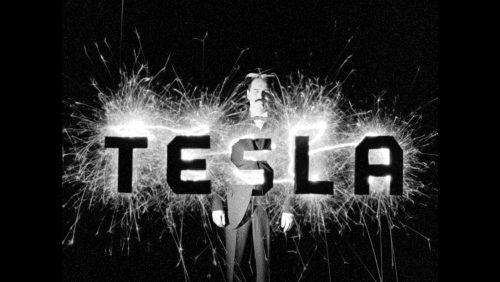
Download
Loading...
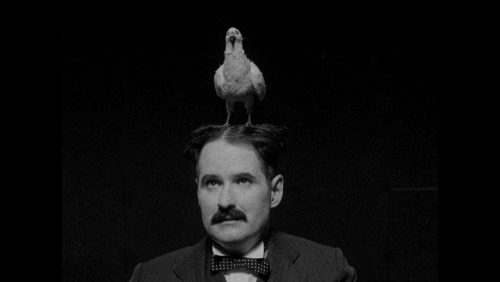
Download
Loading...

Download
Loading...
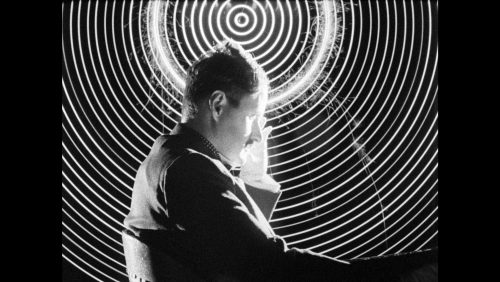
Download
Loading...
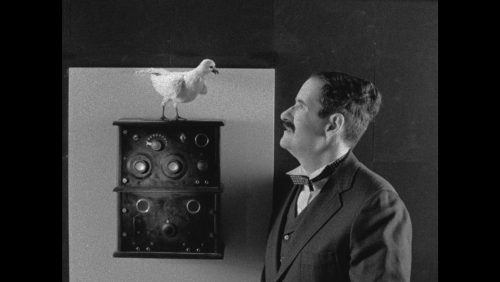
Download
Loading...
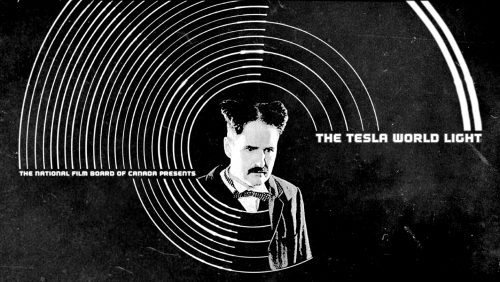
Download
Credits
Direction, animation & editing
Matthew Rankin
Director of photography
Julien Fontaine
Set design & special effects
Dany Boivin
Actor
Robert Vilar
Gaffer
Christian Mouzard
Pigeon design
Atelier Sylvain Racine Inc.
Costume & hair design
Becca Blackwood
Art director
Louisa Schabas
Art department
Ismaël Tremblay-Desgagnés
Simon Besré
Production manager
Guillaume Bilodeau
Production assistants
Nellie Carrier
Frédérick Ouellet
Louis -Thomas Paradis Barnabé
Alexis Veilleux
Fries Mitchell 35R 434 operator
Luka Sanader
Film development
Niagara Custom Lab
Sound design
Sacha A. Ratcliffe
Music
Christophe Lamarche
Sound mix
Jean Paul Vialard
Compositing
Adrian Replanski
On line editing
Serge Verreault
Telecine colorist
Aldo La Ricca
Translation
Annie Goulet
Voice
Maurice Krank
Voice recording
Pierre Yves Drapeau
Studiotoons Inc.
Foley
Lise Wedlock
Recording
Geoffrey Mitchell
Luc Léger
Technical director
Pierre Plouffe
Technical coordination, animation
Yannick Grandmont
Technical coordination
Daniel Lord
Production coordination
Michèle Labelle
Marketing manager
Karine Sévigny
Paule Béland
Administrator
Diane Régimbald
Administrative team
Diane Ayotte
Karine Desmeules
Producer
Julie Roy
Produced by the National Film Board of Canada

Media Relations
-
About the NFB
The National Film Board of Canada (NFB) is a leader in exploring animation as an artform, a storytelling medium and innovative content for emerging platforms. It produces trailblazing animated works both in its Montreal studios and across the country, and it works with many of the world’s leading creators on international co-productions. NFB productions have won more than 7,000 awards, including seven Oscars for NFB animation and seven grand prizes at the Annecy festival. To access this unique content, visit NFB.ca.